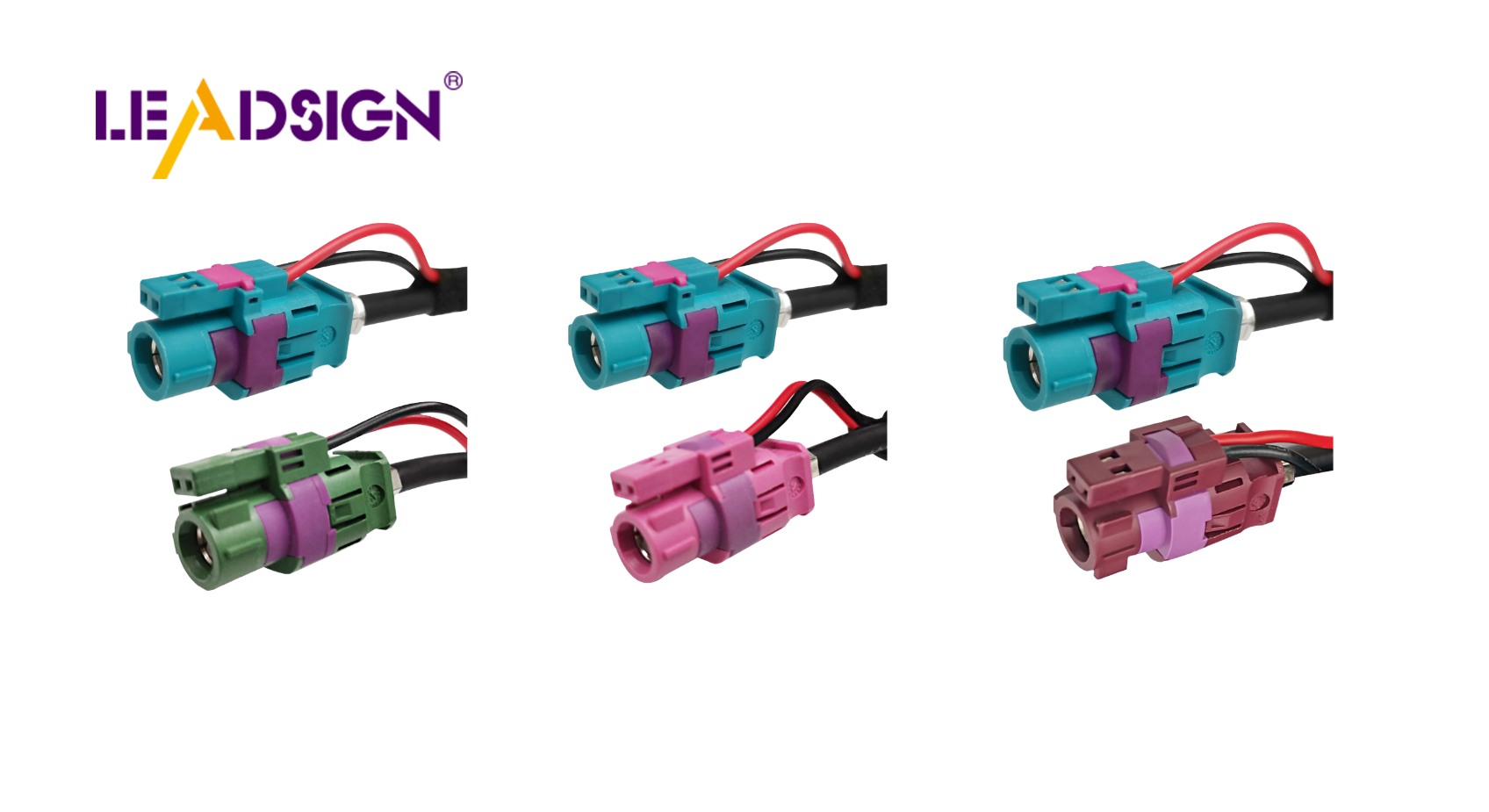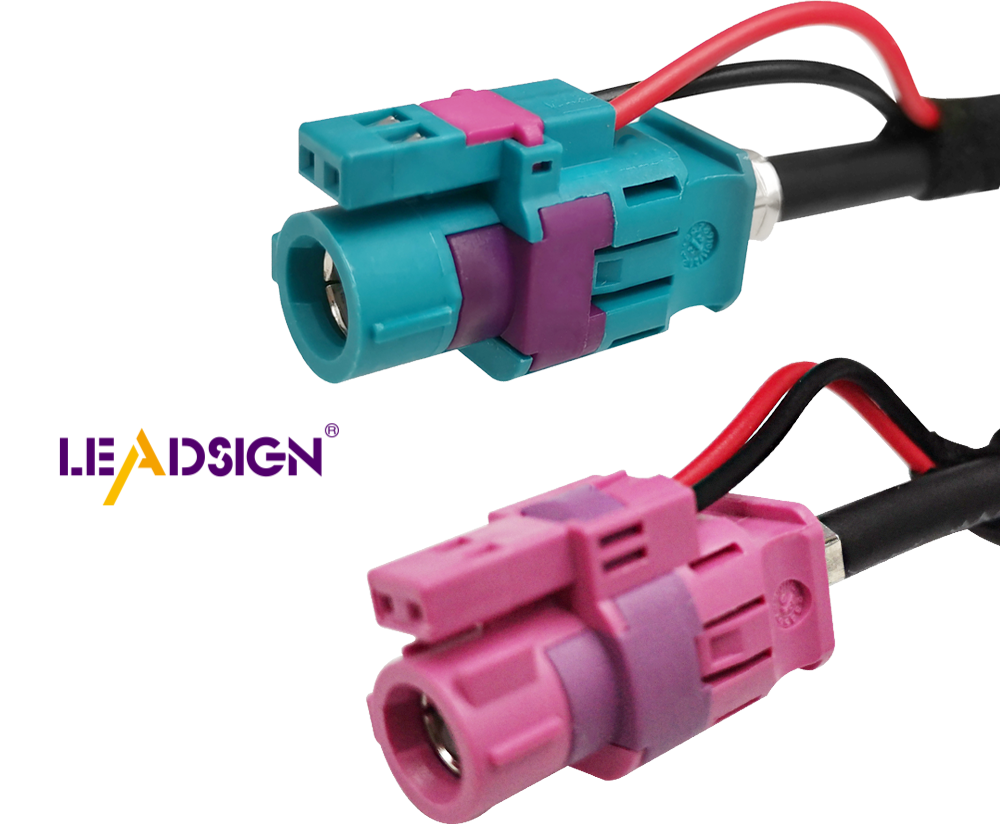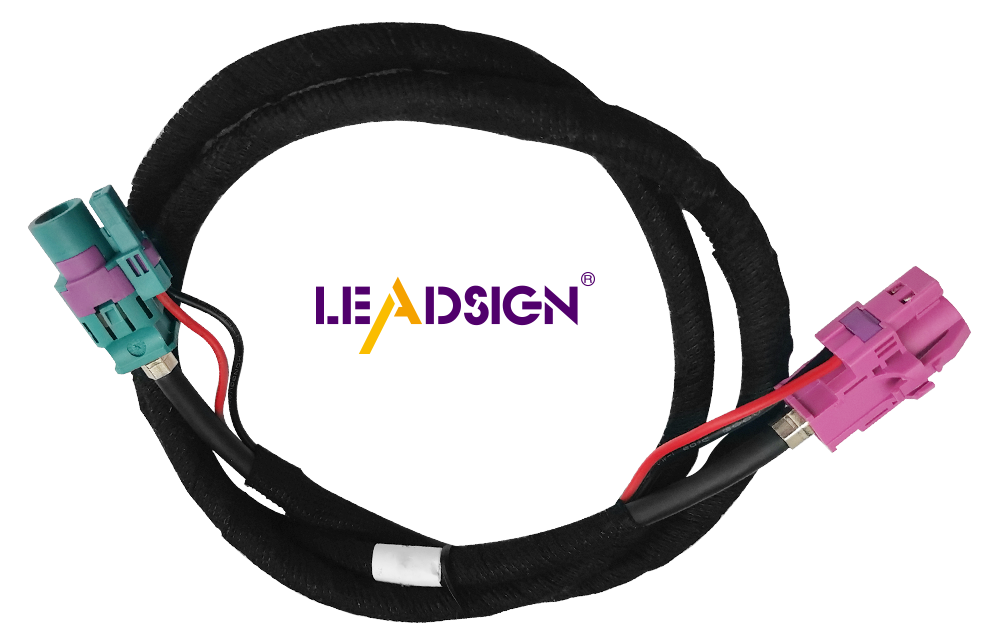Types of Car Wiring Wire and Their Practical Uses

Car wiring wire is the main part of a car's electrical system. It links important parts and helps them work properly. Car wires send electricity to power things like lights and other systems. Different wires are made for different jobs. They can handle heat, last long, and save energy. Wiring bundles are very important in today's cars. Electric cars need these advanced systems even more. Picking the right car wiring wire keeps the car safe and working well.
Key Takeaways
Understanding the different types of automotive wires, such as primary wire, battery cables, shielded cables, and fusible link wire, is essential for maintaining a car's electrical system.
Choosing the right primary wire ensures safe and efficient power delivery to low-power circuits like lights and dashboards, enhancing overall vehicle performance.
Battery cables are crucial for connecting the battery to key components; selecting the appropriate gauge ensures they can handle the required electrical load without overheating.
Shielded cables are vital for modern vehicles, as they block electromagnetic interference, ensuring clear signal transmission for systems like sensors and infotainment.
Fusible link wire acts as a safety device, melting during power surges to protect critical circuits, making it an important addition to any car's wiring system.
When selecting automotive wires, consider factors like temperature resistance, power ratings, and compliance with safety standards to ensure reliability and longevity.
Using high-quality wires with proper insulation, such as XLPE, can prevent overheating and electrical failures, ultimately prolonging the life of your vehicle's electrical system.
Primary Wire in Automotive Wiring

Features of Primary Wire
Primary wire is a popular automotive wire because it is strong and useful. It has a single-conductor design covered with PVC or cross-linked insulation. PVC is cheap and bendable, while cross-linked insulation, like in SXL primary wire, handles heat and damage better. This makes it great for tough jobs.
Primary wire comes in many sizes and colors. Different sizes match the power needs of your project. Colors help you tell wires apart during setup or fixing. For example, red wires are for power, and black wires are for ground.
Primary wire bends easily, so it fits in tight car spaces. This makes it easier to install in small or big vehicles. The automotive wire insulation keeps the wire safe from damage, making it last longer.
Uses of Primary Wire
Primary wire is used for low-power circuits in cars. It powers things like lights, dashboards, and relays. These circuits need good automotive wires to work safely and well. For example, car headlights and taillights use primary wire to get steady power.
This automotive wire is also used for general wiring in automotive wiring systems. It connects extra systems like accessories and ignition circuits. In modern cars with complex systems, primary wire is very important.
For hotter areas, SXL primary wire is a good choice. Its insulation handles high heat, so it works well in engines. TXL automotive wire is thin but strong, perfect for tight spaces needing durable wires.
Picking the right primary wire helps your car’s electrical parts work well. Whether fixing old wires or adding new ones, knowing about primary wire helps you choose wisely.
Battery Cable in Automotive Wiring

Features of Battery Cable
Battery cables are very important for a car's electrical system. They are thick and strong, built to handle lots of electricity. Their tough design helps them work well, even in hard conditions. The cable's thickness is measured in AWG. Lower AWG numbers mean thicker cables that carry more electricity.
The cable's insulation protects it from heat, rust, and scratches. This makes it good for rough environments. The insulation is usually red or black. These colors help you tell positive and negative connections apart. This makes setting up and fixing the cables easier and safer.
Battery cables can handle bad weather without breaking down. They stay strong over time, even in extreme conditions. Their design focuses on safety and efficiency, making them a dependable choice for powering your car.
Uses of Battery Cable
Battery cables connect the car battery to important parts. They link the battery to the starter, alternator, and ground. This connection helps start the engine and powers key systems.
These cables also work with high-power tools like winches and inverters. Their strong build lets them handle the high electricity these tools need. For example, when using a winch to pull heavy things, the cable delivers steady power without overheating.
Battery cables are bigger than other automotive wires because they carry more energy. Their size shows how important they are for power distribution. Picking the right battery cable improves your car's wiring system and keeps everything running smoothly.
Shielded Cable for Automotive Wires
Shielded cables are very important in today’s cars. They help keep signal transmission clear by blocking outside interference. As cars get more advanced, they need better communication between electronic parts. Shielded cables are made to handle this need with strong and reliable features.
Features of Shielded Cable
Shielding to block electromagnetic interference (EMI)
Shielded cables have a special layer to stop electromagnetic interference (EMI). This layer protects the wires inside from outside noise. By blocking EMI, these cables make signal transmission clearer and more accurate. This is especially helpful in cars where wires are close together. It stops signals from mixing between nearby wires.
Scientific Research Findings: Studies show shielding in car wires lowers noise and crosstalk. This improves how automotive wire systems work.
Multi-conductor design for carrying signals
Shielded cables often have many conductors inside. This lets them send multiple signals at the same time. They are great for systems needing fast data transfer, like infotainment or driver assistance systems (ADAS). The shielding and multi-conductor design keep signals strong, even in tough conditions.
Uses of Shielded Cable
Connecting sensors, cameras, and communication systems
Shielded cables connect sensors, cameras, and communication systems in cars. These parts need clear signal transmission to work well. For example, parking sensors and backup cameras use these cables to send clear signals. This helps drivers get accurate feedback without delays.
Audio and fast data transfer in modern cars
Modern cars use shielded cables for audio and fast data transfer. They connect devices like infotainment systems, navigation, and screens. The shielding stops interference that could ruin sound or data. This makes shielded cables key for smooth and enjoyable driving.
Scientific Research Findings: Shielded cables are vital for keeping signals clear in automotive applications like ADAS and infotainment. Shielding reduces EMI, ensuring reliable use.
Picking the right shielded cable improves your car’s electrical systems. These cables block interference and keep important systems running smoothly. Whether upgrading or fixing your car, shielded cables are a smart choice for modern automotive wire needs.
Fusible Link Wire in Automotive Wiring
Fusible link wire helps keep your car's electrical system safe. It protects important circuits during sudden power surges or overloads. Knowing its features and uses can make your car wiring more reliable.
Features of Fusible Link Wire
Melts to stop current during overloads
Fusible link wire works as a safety device in cars. If too much electricity flows, the wire melts and breaks the circuit. This stops extra current from harming other parts. Unlike regular fuses, it is built into the wiring system and doesn’t need frequent changes.
Important Note: Fusible link wire is not the same as a fuse. They have different jobs, so don’t swap them.
Protects important circuits from damage
This wire is made to guard key circuits like the alternator, starter, and main power. When extreme conditions happen, it melts to stop electricity from damaging these systems. Its design keeps your car wiring safe and working well.
Uses of Fusible Link Wire
Shields circuits like alternator, starter, and main power
Fusible link wire protects the most important circuits in your car. It keeps the alternator, which makes power, and the starter, which starts the engine, safe. It also guards the main power supply, helping your car run smoothly.
Stops damage from power surges
Power surges can happen suddenly, especially in cars with advanced systems. Fusible link wire absorbs these surges, stopping them from spreading through the wiring. This is very useful in modern cars with sensitive electronics.
Pro Tip: Always pick the right size fusible link wire for your circuit. The correct size ensures proper protection and avoids problems.
Adding fusible link wire improves your car’s safety and reliability. It protects key circuits and helps your wiring last longer. Whether fixing or upgrading, fusible link wire is a must-have for a strong electrical system.
Things to Think About When Picking Types of Automotive Wires
Choosing the right types of automotive wires is important for safety and performance. Each factor helps decide how well the wire will work in your car.
Handling High Temperatures
Why wires must resist engine heat
Car wires, especially near the engine, face high heat. Pick wires that can handle this heat without breaking down. Heat-resistant wires stop insulation from melting or cracking. This avoids short circuits or system problems. It’s very important for wires near engines or exhausts.
Using strong materials like XLPE for heat
Wires with XLPE insulation are great for handling heat. XLPE can take temperatures up to 125°C. This makes it better than regular PVC insulation. XLPE wires, like TXL and GXL, are used in modern cars because they last longer in hot conditions.
Voltage and Current Limits
Matching wire strength to power needs
Every automotive wire has a limit for voltage and current. Make sure the wire can handle the power it will carry. If not, it might overheat and damage parts. Always check the wire’s details to match your car’s needs.
Stopping overheating and power loss
Good wires prevent overheating and power loss. Power loss happens when wires can’t handle the load, causing devices to work poorly. For example, headlights might dim. Picking the right wire size avoids these issues and keeps power steady.
Following Rules and Standards
Meeting rules like SAE or ISO
Wires that follow rules like SAE J1128 or ISO 6722 are safer. These rules check things like insulation thickness and voltage limits. Wires meeting these standards are tested for strength and safety.
Pro Tip: Look for wires with SAE or ISO labels for top quality.
Making sure wires are safe and strong
Standard-compliant wires are safer and last longer. They handle tough conditions like heat, fluids, and vibrations. Choosing these wires lowers the chance of problems and helps your car’s wiring last longer.
Picking the right car wires keeps your car safe and working well. Each wire has a job, like powering parts or sending signals. Look for wires that handle heat, carry enough power, and meet safety rules. Good wires have strong covers to block heat, chemicals, and water. This helps stop electrical problems. Choosing the right wires makes your car last longer and work better. It also avoids future troubles. Smart choices keep your car safe and dependable.
FAQ
What are the different types of automotive wires?
Automotive wires have different types for specific jobs. Primary Wire is common, with one conductor for low-voltage circuits. Battery Cables handle high power, while Shielded Cables reduce interference. Fusible Link Wires protect circuits from damage. Each type helps your car's electrical system work well.
How can you determine the appropriate automotive primary wire for your application?
To pick the right primary wire, think about its use. Check if it will face heat or moisture. For engine areas, choose heat-resistant insulation like XLPE. Match the wire size to the power it will carry. This ensures safety and good performance.
Why is shielding important in automotive wires?
Shielding blocks electromagnetic interference (EMI) that can mess up signals. It keeps systems like sensors and cameras working properly. Shielded cables make sure signals stay clear and accurate. This is very important for modern cars with advanced electronics.
What is the purpose of fusible link wire in a car?
Fusible link wire protects your car’s electrical system. It melts during power surges, breaking the circuit. This stops damage to parts like the alternator and starter. It keeps your car’s wiring safe and reliable over time.
How do you identify the positive and negative battery cables?
Battery cables are color-coded for easy use. The red cable is positive, and the black cable is negative. These colors help you connect them correctly. This prevents mistakes that could harm your car’s electrical system.
What factors should you consider when selecting automotive wires?
Think about three things: temperature resistance, power ratings, and standards compliance. XLPE insulation handles heat better than PVC. Make sure the wire can carry the needed power safely. Choose wires that meet SAE or ISO standards for durability.
Can you use primary wire for high-power applications?
Primary wire is for low-power tasks like lights and dashboards. For high-power jobs, use Battery Cables. These are thicker and can safely handle more electricity. They are better for things like starting the engine or using winches.
What makes cross-linked insulation better than PVC?
Cross-linked insulation, like XLPE, resists heat better than PVC. It works in temperatures up to 125°C, making it great for hot areas. It is also tougher and lasts longer, protecting the wire from damage.
How do shielded cables improve audio and data systems in cars?
Shielded cables block noise and interference. This keeps sound clear and data reliable. They are important for systems like infotainment, navigation, and ADAS. Shielding ensures these systems work smoothly.
Why is it important to follow automotive wiring standards?
Standards like SAE J1128 or ISO 6722 ensure wires are safe and strong. They test for insulation, voltage limits, and durability. Using standard-compliant wires lowers the chance of problems and keeps your car’s wiring reliable.
See Also
Understanding HSD Connectors Within Automotive Applications
Enhancing Data Transfer in Vehicles With Advanced Connectors
Uncovering the Advantages of Fakra Connectors in Vehicles

